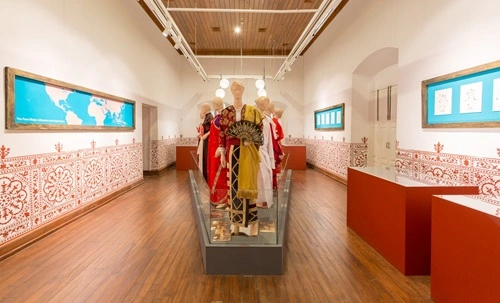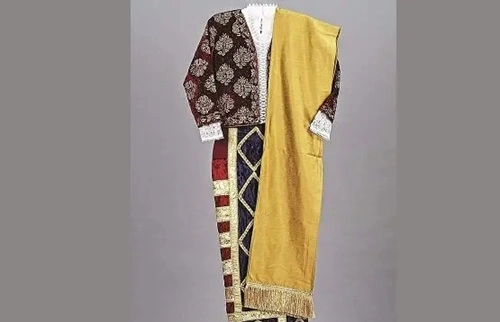When you go visit Goa to chill out for a bit, you’ll clearly see the Portuguese influence there because once it was a Portuguese colony back a few hundred years ago. Though, before that, sure, there were native Indian people who used to live there, and that’s why, even after the Portuguese influence, you’ll see so many cultural things preserved by the locals. One of those things is surely the traditional attire or dress of Goa. Well, if you just visit the common touristic places of Goa, you won’t see much of these traditional dresses worn by common people, but if you go to offbeat or more local areas, you’ll clearly be able to notice it. Today though, we’re here to introduce you with the Traditional Dress of Goa, so, let’s just get to it right away.
Traditional Dress of Goan Women
1. Pano Bhaju

So this is one of the very popular and lovely attires for Goan women. It has:
- The blouse thing, which is called Pano
- A long skirt (Bhaju)
- A cool matching shawl
You wear this dress on occasions like festivities, weddings, and dance performances for sure. Super-soft, cotton, or silk stuff, you know\, and of course, bright colors like red, yellow, green.
2. Kunbi Saree
Pretty much worn by the Kunbi tribal ladies in Goa, though it looks really simple yet steeped in tradition. In this one though, you see, cotton is usually used, in earthy colours like brown, red. It’s oh-so-comfortable to wear and goes well with Goa’s warmth.
3. Nav Vari Saree (Nauvari)
Well, it is a really long nine-yard saree, otherwise popularly called Nav Vari. It does not require a petticoat, however you will wear it like a robe, and it even kiddingly gives the look of pants at the bottom. So, you can imagine how much easy it is to move about and work in it definitely. Wear it for some special occasions, you know, it goes by the Maharashtrian style.
4. Kashti
Super bright and really vibrant is Kashti saree. It has a kind of unique spin with a good kind of pleat knot. Mostly paired with light yet good accessories like bangles and anklets. So simple yet so stylish, can be worn for festivals or even for daily casual wear.
5. Feni Suit
The Feni Suit is a very modern take on the traditional wear, where it is a short kurta (tunic) with matching pants. With this one, though, the embellishments include very trendy work like mirrors or embroidery on it. It may be worn during the festivals and for dance performances as well, and it is full of bright colours and fun!
Traditional Dress of Goan Men
1. Pudvem/Kashti

Extremely simply comfortable, this very outfit for men consists of the following:
- A simple white shirt
- Shorts known as Kashti or Pudvem
And just so you know, this outfit perfectly complements the heat and humidity of Goa. It is still being worn in a number of rural areas, practically so.
2. Kupya
The Kupya is the long shirt thing, mostly worn with pants, common in Goa’s villages. And sure enough, it is for everyday wear and festivals, pretty much. It looks super traditional and pretty comfortable, too.
3. Valkal
Valkal is just some ancient garment made from bark or leaves! It seems to be adorning the tribal folk of Goa. It speaks of the natural life of the erstwhile Goans. The rest is pretty much history!
3. Portuguese-Inspired Suits
Because of Portuguese rule, the Goan Catholic men began to dress in suits and fancy shirts for weddings, church, and the like. These days, the outfits are still very much in vogue for special occasions.
4. Kob (a traditional hat)
Once in a while, you will see Goan men wearing a cool conical hat made from palm or coconut leaves. Works great against the sun and the rain. It’s still used in rural areas, mostly.
Traditional Attire of Goan Children
See, just like any other state in the country, sure, Goa is modernised too, and that effect is mainly on the younger generation, and you barely see kids in traditional attire, especially when we talk about everyday wear. Though, Goan children wear traditional dresses on special occasions:
- For the girls, these consist of tiny replicas of Pano Bhaju or super colourful sarees.
- The boys wear a kurta along with pants or cool Kashti.
These outfits are fun and bright, you know, giving children a taste of their culture.